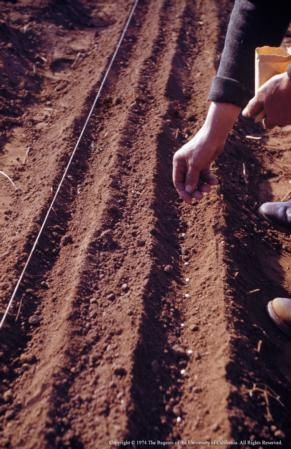
Posts Tagged: seeds
Eat THAT Seed??????
Is It Safe to Eat the Avocado Seed?
https://www.californiaavocado.com/blog/march-2016/is-it-safe-to-eat-the-avocado-seed
We have received a lot of questions from consumers and dietitians lately asking us what we think about consuming the avocado seed/pit. So is it safe to eat the avocado seed? We don't recommend it.
While this is presently a very popular topic and there is a body of evidence looking at extracts of the avocado seed, the fact is there is not enough research to support consuming an avocado seed. The purported health benefits and risks of avocado seed intake are poorly characterized.
As stated in a 2013 research study by Pennsylvania State University, “although the currently available data is promising, for most indications, it remains very preliminary and further studies are needed” and “In addition, the safety of the various extracts of the avocado seeds must be assessed in order to more fully estimate the usefulness of this resource."
While it is not recommended that you eat the seed of the avocado, the fruit/pulp of the California Avocados is ripe with nutrition. One-fifth of a medium avocado (1 oz.) has 50 calories and contributes nearly 20 vitamins and minerals, making it a tasty choice for a nutritious and healthy diet. California Avocados are naturally sodium and cholesterol-free; a naturally nutritious superfood.
And some research papers to chew on:
Avocado (Persea americana) seed as a source of bioactive phytochemicals
http://www.researchgate.net/publication/235755293
Nutritional efficacy of avocado seeds
https://www.researchgate.net/publication/282104753
Optimization of the antioxidant and antimicrobial response of the combined effect of nisin and avocado byproducts
http://dx.doi.org/10.1016/j.lwt.2015.07.048

avocado-seed-2-yes-no
Seedy Citrus
Travel can be enlightening. In Turkey I learned that sour orange rootstock is routinely used with lemon and mandarin scions without any fear of tristeza virus, a formidable disease of oranges. When I heard this I asked Georgios Vidalakis in charge of the UC Clonal Protection Program and a virologist. And he said that it was true and the neat thing is that the rootstock can handle heavy, calcareous soils better than other citrus rootstocks. So we are doing a trial on rootstocks and sour orange is included.
Something else I “learned” was that if you girdle citrus at flowering, the fruit has few or no seeds. Well, I talked to many growers and scientists and they all said the same thing. I went through the citrus literature and I could find no mention of this. I emailed Carol Lovatt, the plant physiologist at UCR and she said that when you alter hormone flows by girdling, who knows what might happen. So we set up a little trial in lemon that flowers pretty much all year long on the coast. Every month we girdle branches with either a hand saw or a girdling knife which make different sized cuts, flagging the branches with different colored tape to identify the girdling date. Over an 18 month period we harvested fruit and cut it to count seeds. And………………………………………there was only a slight difference in seed numbers, a few less in the girdled trees.
The goal of this trial was to see if girdling worked and if so, what was being changed in the tree and if could identify that, then maybe we could develop a nutritional program that would do the same thing. That way we wouldn’t need to girdle. But not everything you hear turns out to be true.

seedy citrus
Seed storage
The 2011 UC Master Gardener Vegetable Demonstration Garden Project has recently finished. A group of certified Master Gardeners and trainees spent time each week from January 27 through December 15 learning vegetable gardening techniques through hands-on experience.
They documented their project so that they could impart lessons learned throughout the2011 project. This article is the eighth, and final, in a series to share this knowledge.
Seed storage:
Saving and storing seeds can provide additional fun and learning opportunities to vegetable gardening.
- Be sure that seeds being used are not beyond their expiration date.
- Consider saving seeds from plants with superior characteristics (e.g., hardy during cool temperatures).
- If you plan to save the seeds from your corn plants, you need to take steps to avoid cross-pollination from other corn plants. To keep heirloom corn pure, you have two options: 1) bag the ears and tassels, and hand pollinate, or 2) arrange it so your corn blooms earlier than any other corn around you.
- The female flowers of each crop can be fertilized only by pollen from male flowers of the same species. Cross pollination, however, can occur between varieties within a species. When crosses occur between members of the same species, we do not see the effect of the cross the first year. However, if the seeds are saved and planted, the plants will produce fruit that will be different from either of the parents.
- There is no reason to soak zucchini seeds in water prior to storage since the pulp can readily be separated from the seed. The pulp on tomato seeds, however, is tightly attached to the seeds making it necessary to soak the seeds for a few days. Once the pulp begins to ferment, it is easily separated from the tomato seeds.
- After soaking tomato seeds in water for two or three days, the viable seeds will sink to the bottom of the container. Dispose of the tomato seeds that float to the surface.
- The way to tell if zucchini seeds are viable is to look for plump seeds. Small flat zucchini seeds will most likely not germinate or will be of poor quality. Since viable zucchini seeds will float in water, the float test used to differentiate poor quality tomato seeds from viable seeds should not be used.
Questions on gardening? Please contact our Master Gardener helpline at 645-1455 or contact them by email at mgventura@ucdavis.edu.

